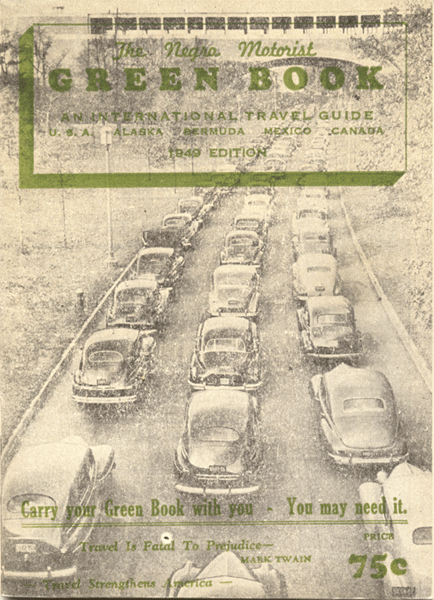The Negro Motorist “Green Book” 1949
 This is new to us: The Negro Motorist Green Book is the subject of today’s “Little-Known Black History Fact.”
This is new to us: The Negro Motorist Green Book is the subject of today’s “Little-Known Black History Fact.”The Negro Motorist Green Book was a publication released in 1936 that served as a guide for African-American travelers. Because of the racist conditions that existed from segregation, blacks needed a reference manual to guide them to integrated or black-friendly establishments. That’s when they turned to “The Negro Motorist Green Book: An International Travel Guide” by a Harlem postal employee and civic leader named Victor H. Green and presented by the Esso Standard Oil Company. Originally provided to serve Metropolitan New York, the book received such an alarming response, it was spread throughout

(The Root) -- In 1936 a Harlem postal worker and activist named Victor H. Green decided to develop a guide that would help African Americans travel throughout the country in a safe and comfortable manner. The Negro Motorist Green Book (also called The Negro Travelers' Green Book), often simply known as The Green Book, identified places that welcomed black people during an era when Jim Crow laws and de facto segregation made it difficult for them to travel domestically without fear of racial backlash.
The Green Book listed businesses and places of interest such as nightclubs, beauty salons, barbershops, gas stations and garages that catered to black road-trippers. For almost three decades, travelers could request (for just 10 cents' postage) and receive a guide from Green. Eventually the guide expanded to encompass information about Canada and Mexico.
Like users of today's popular recommendation sites such as TripAdvisor, travelers collected information during their journeys, which they shared with Green
The Negro Motorist Green Book, 1949
“The Negro traveler's inconveniences,” writes Wendell P. Alston in The Negro Motorist Green Book for 1949, “are many and they are increasing because today so many more are traveling, individually and in groups. . . .
The GREEN BOOK with its list of hotels, boarding houses, restaurants, beauty shops, barber shops and various other services can most certainly help solve your travel problems. It was the idea of Victor H. Green, the publisher, in introducing the Green Book, to save the travelers of his race as many difficulties and embarrassments as possible.”
Click here to see the complete edition of The Negro Motorist Green Book in pdf format.

Images: From the Collections of The Henry Ford. 1) Excerpts from 87.135.1736
